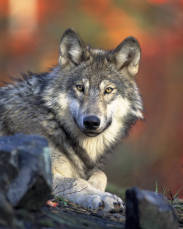Some reptiles and amphibians are off, and two otter species are on. The Associated Press reported this week that the Oregon Wildlife Integrity Program has updated its list of prohibited species in a three-year long process. The Wildlife Integrity Program is part of the Oregon Department of Fish and Wildlife. In some states prohibited species are handled by the department of agriculture or the department of commerce.
The reptiles and amphibians taken off the list are not considered a risk of competing or surviving in Oregon if they escape. Three other amphibian species were kept on the list because they do pose a risk.
The two otters prohibited are the eastern subspecies of North American river otter, and the Asian small-clawed otter.
Read the Associated Press article in the Seattle Post-Intelligencer for the specific species.

 restoration efforts in the region began.
restoration efforts in the region began.

 Earlier this summer, New York State Department of Environmental Conservation wildlife biologists banded 15 peregrine falcon chicks from five nests in western New York State. The birds are part of the growing peregrine population in the state.
Earlier this summer, New York State Department of Environmental Conservation wildlife biologists banded 15 peregrine falcon chicks from five nests in western New York State. The birds are part of the growing peregrine population in the state. Old MacDonald never had it so good with his own domestic pigs. But if he has a farm in the Northwestern US, he may soon regret the success of feral swine, which have become a big problem in Idaho, Oregon and Washington.
Old MacDonald never had it so good with his own domestic pigs. But if he has a farm in the Northwestern US, he may soon regret the success of feral swine, which have become a big problem in Idaho, Oregon and Washington.
